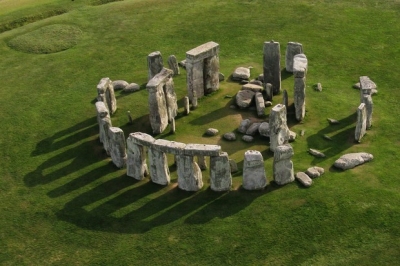
One theory suggests that Stonehenge was used as a Late Neolithic burial site and a monument to the dead – or at least it was for 500 years during the first two phases of its construction from ~3,000 BC until the monuments were erected in ~2,500 BC.
Charred remains were unearthed in holes around the site, known as the Aubrey Holes, that once held small standing stones. Analysis of the bones suggests they were buried during this 500-year period. After 2,500 BC, the people who used Stonehenge stopped burying human remains in the stone circle itself and began burying them in ditches around the periphery, suggesting a shift in the cultural significance of Stonehenge.
From studying the remains of those buried at the site, we know that the bodies of the dead were transported from far and wide to be buried at Stonehenge; some appeared to have lived more than 120 miles (200km) away in Wales. Carbon dating of the remains suggests they were cremated off-site, transported to Stonehenge and buried there around 4,400-5,000 years ago.
The evidence to support this theory is dotted all around the landscape around the monument; the area within a 2-mile radius of Stonehenge contains hundreds of Bronze Age burial mounds, or ‘tumuli’.
These burial mounds are unique for their dense, grouped distribution across the landscape, and are frequently within sight of the stone circle itself. The spiritual significance of this shouldn’t be understated; being buried in direct sight of Stonehenge undoubtedly held a great deal of significance for Neolithic Britons.
Archaeologists also discovered evidence of a large settlement of houses nearby, suggesting that Stonehenge was at the centre of a large ancient ceremonial complex that ran along the River Avon.
Credit : Evan Evans
Picture Credit : Google




